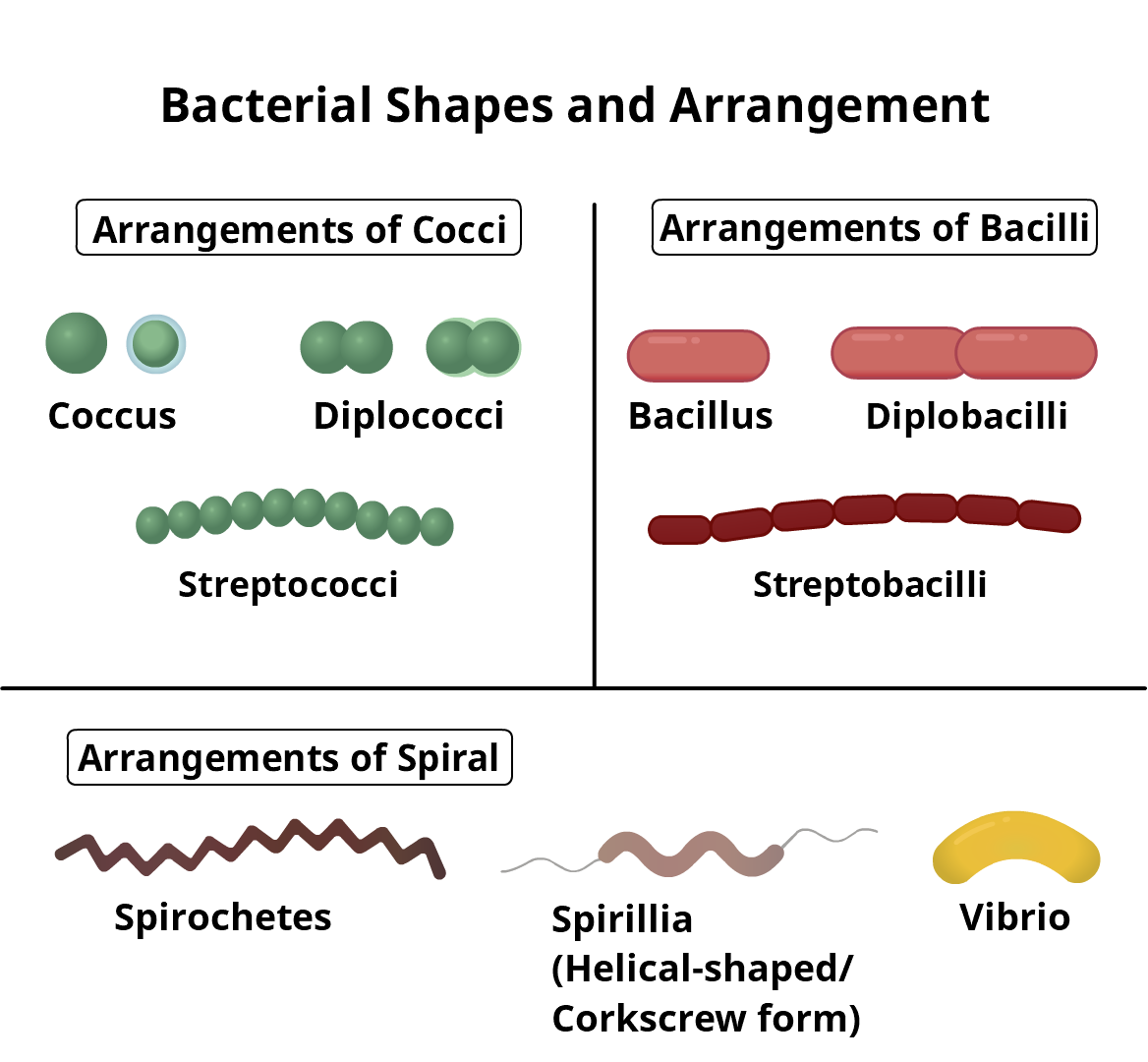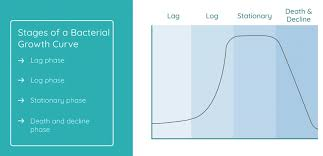Monera (Bacteria)
1/18
There's no tags or description
Looks like no tags are added yet.
Name | Mastery | Learn | Test | Matching | Spaced |
|---|
No study sessions yet.
19 Terms
Prokaryotic Micro-organisms (Bacteria)
Dont have a nucleus or other membrane-enclosed organelles.
bacterium Structure
Capsule = Protection
Flagellum = Movement
Cell Wall = Shape + Protection
Ribosomes = Make Proteins
DNA Loop = Replication
Plasmid = DNA loop antiobotic resistance.
Mesosome = Respiration

Bacteria Shapes (Types of Bacteria)
Rod/Spiral/Spherical

Reproduction (Bacteria)
Bacteria grow and reproduce asexually by means of binary fission.
1.The DNA replicates
2.The cell elongates
3.The loops of DNA move to opposite ends of the cell
4.The cell membrane and wall pinch in and the cell splits.

Factors affecting growth of bacteria (5)
Temperature
External solute concentration
PH
Oxygen
Pressure
Temperature (Growth of Bacteria)
Grow well between 20 and 30 (Mesophiles).
Some bacteria can withstand high temperatures without being denatured (Thermophiles).
External Solute Concentration (Growth of Bacteria)
If the external solution has a higher solute concentration, the bacteria cell will lose water by osmosis.
If the external environment has a lower solute concentration, water will move into the bacteria cell wall by osmosis.
PH (Growth of Bacteria)
Bacterial enzymes work at a specific PH
Most bacteria grow well in near neutral conditions.
Oxygen (Growth of Bacteria)
Most bacteria require oxygen for respiration (Aerobic e.g. Streptococcus)
Some bacteria can only grow in the absence of oxygen (Obligate anaerobes e.g. Clostridium tetani)
Some bacteria can grow with or without oxygen (Facultative anaerobes e.g. E.coli)
Pressure (Growth of Bacteria)
Most bacteria growth is affected by high pressure as their cell wall cannot withstand high pressure.
Some can withstand high pressure (deep sea vents)
Growth Curve of Micro-organisms (5 stages)
1.Lag phase: growth is slow as the bacteria adjust to conditions. They have to make new enzymes to break down a new substrate.
2.Log phase: growth is exponential as micro-organisms reproduce rapidly by binary fission.
3.Stationary phase: nutrients begin to run out and waste products build up. The rate of death equals the rate of binary fission, so the numbers remain stable.
4.Decline phase: death is greater than reproduction due to a lack of nutrients and build up of toxins and waste.
5.Survival phase: some micro-organisms produce endospores that can survive for long periods until conditions are favorable again.

Nutrition
Autotrophic = an organism that makes its own food.
Bacteria can be photosynthetic (use light) e.g. purple sulfur bacteria or chemosynthetic (use chemical reactions) e.g. nitrifying bacteria.
Heterotrophic = an organism takes in food made by other organisms. E.g. E.coli.
Saprophytes (take in food from dead organic matter)
Parasites (take food from a live host)
Beneficial Bacteria
Lactic acid bacteria are responsible for curdling milk to make yoghurt and cheese.
Bacteria in the large intestine e.g. E.coli produce B group vitamins and vitamin K.
Harmful Bacteria
Pathogenic bacteria = Disease causing
Streptococcus - causes sore throat and scarlet fever.
E.coli - can cause food poisoning.
Economic importance of bacteria
Food Processing
Used in antibiotic production.
Symbiotic Relationship
Beneficial to both host and parasite
Antibiotics
Used to control bacterial infections, they have NO effect on viruses.
When antibiotics are used to treat an infection, most are killed. However some antibiotic resistant bacteria may develop through mutation. This means new antibiotics must be produced continuously.
Overuse of antibiotics results in increased growth of antibiotic resistant bacteria.
Food Processing (Batch processing/culture)
Definition - the growth of cells in a sealed container over a short period of time under ideal conditions until the nutrients are used up.
Process - A fixed amount of sterile nutrient is added to micro-organisms in the bioreactor. Other conditions are ideal for growth.
The micro-organisms go through the lag, log and stationary phase, it is stopped before decline phase because little product is formed and waste builds up. At the end the bioreactor is emptied and sterilized. Product is separated from the solution. e.g. antibiotics.
Food Processing (Continuous Flow (culture))
Definition - the growth of cells in an open bioreactor. Nutrients are added and products are removed all the time to maintain conditions for growth.
Process - Nutrients are continuously fed into the bioreactor. The culture medium is continuously withdrawn to maintain the volume of material.
The micro-organisms are maintained in the log phase so product produces at a faster rate. All factors are kept constant (PH, Temperature).
Maintaining these conditions is difficult so this process is only used for a small number of applications, e.g. production of single-cell protein.